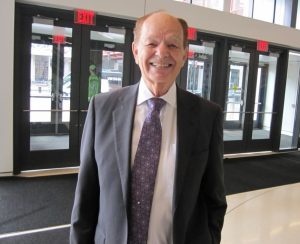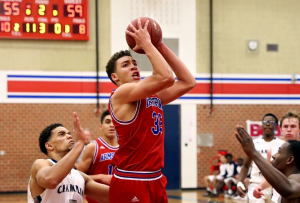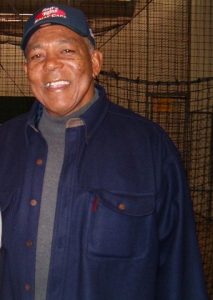Where will the Minnesota Timberwolves franchise be located in three to five years?
Still in Minneapolis? Probably, but Seattle could beckon. The Emerald city is a solid possibility to land either an NBA expansion franchise or existing team by 2026.
Wolves owner Glen Taylor is negotiating a sale to billionaire entrepreneur Marc Lore and baseball legend turned businessman Alex Rodriguez. Taylor insists provisions of the sale will bond the team to Minneapolis. “We have language in there (the contract) that says they can’t move the team,” Taylor told Sports Headliners this afternoon.
Taylor said Lore and Rodriguez have indicated to him their desire to keep the team in Minneapolis. But it’s human nature to wonder about new owners, and history has witnessed plenty of American sports franchises that changed addresses after previous ownership completed sales.
Is language saying the franchise can’t be moved ironclad? In the world of litigation, is there such a thing? If new owners eventually make a case that Timberwolves fan support and corporate backing is so poor their business is unsustainable in this market, a judge might rule the franchise can be relocated–despite language to the contrary.
What’s interesting is how “the dots” connect the franchise to a possible relocation to Seattle. That city lost its NBA SuperSonics franchise more than 10 years ago to Oklahoma City. Fervor is in place to bring the NBA back to the area where a franchise would play in a building called Climate Pledge Arena.
The naming rights to the arena were purchased by Amazon and the facility is the old KeyArena where the SuperSonics played. The arena is receiving about a $1 billion renovation and scheduled to open this fall as the home of the NHL expansion Seattle Kraken. The “facelift” is privately financed and led by former Timberwolves executive Tim Leiweke.
Leiweke is a master promoter who helped the Timberwolves become a box office hit in the first years of the franchise in the early 1990s. His Oak View Group (OVG) is designing Climate Pledge Arena to exactly fit NBA needs in every way including revenue generation.
“Everything we’ve done — from naming rights, to sponsors, to suites, to opera boxes, to club seats — we have built in to protect the economics of the NBA team,” Leiweke told the Seattle Times in a December 22 article last year. “And that’s critical — to maximize the revenue streams. So, we’ve done that as well.”
Leiweke has extensive NBA connections because of career experiences that include leadership positions with the Denver Nuggets and Toronto Raptors. He has the ear of NBA commissioner Adam Silver who rules over the 30-team league and has hinted at future expansion. Prime expansion targets are led by Seattle and probably Las Vegas.
Kraken principal owner David Bonderman also owns part of the NBA Boston Celtics. Investors in the Kraken and OVG include family that owned the Supersonics, furthering the Seattle NBA connection. The arena’s manager is Steve Mattson whose previous job was managing Target Center, the Timberwolves home. He is more than familiar with the lease terms between Target Center and the Wolves.
Neither Lore nor Rodriguez has ties to Minneapolis but A-Rod has a Seattle connection. Rodriguez began his MLB career in the Pacific Northwest and has expressed his affection for Seattle. He was bitterly criticized for leaving the Mariners to sign a free agent deal years ago with the Texas Rangers but could become a Seattle hero by bringing the Timberwolves to town.
The city owned Target Center has a lease with the Timberwolves that runs through 2035. If the team moves its games from the downtown arena before then, the Wolves owners must pay a $50 million penalty. That’s not a big deterrent for Lore and Rodriguez who reportedly will pay $1.5 billion to Taylor for both the Timberwolves and his WNBA Minnesota Lynx.
While it’s plausible to contemplate a Wolves relocation to the Northwest, it’s all but impossible to forecast the Lynx landing in Seattle. That city has the WNBA Storm, the 2020 league champions owned by a group of Seattle area women who have shown a long commitment to the franchise. Long term the Lynx might remain in Minnesota, playing at Target Center or another area venue.

Taylor, a lifelong Minnesotan who turns 80 later this month, is sincere in wanting to see the NBA continue in Minneapolis. He ranks near the top of any billionaire list for humility and caring about others. He sees the franchise as a state asset and years ago rescued the Wolves when it looked like the team was relocating to New Orleans.
Competitively, the Wolves have struggled on the court for much of this century, seldom achieving winning seasons and earning their way into the playoffs. Their failure to win has held back fan support and financial success but it’s not true this is a bad basketball market. In the past both the Timberwolves and Gophers have been basketball leaders in attendance and fan followings.
It would be sad to see the city lose its NBA franchise for a second time. In 1960 the Minneapolis Lakers, five-time world champions, left for Los Angeles. In the 1980s Governor Rudy Perpich’s NBA Task Force and Minneapolis businessmen Marv Wolfenson and Harvey Ratner helped stir interest in a NBA return to Minnesota. The expansion Timberwolves played their first season in 1989-1990.
Maybe Lore and Rodriguez will keep the team here for another 30 years. But when owners aren’t local, questions about intentions arise. “Dots” can lead elsewhere. And this time all the way to Seattle.
Comments Welcome







